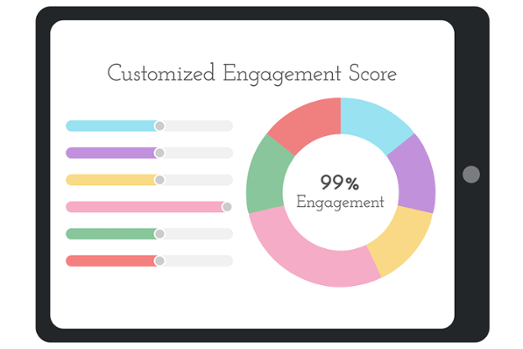
Professor Stephanie Cole, Ph.D., Associate Professor, History at the University of Texas at Arlington considers herself to be an early adopter of technology in the classroom. She’s a longtime user of Echo360’s lecture capture technology. This September, she began teaching classes using our active learning platform, a solution that combines real-time learner analytics, student engagement tools, and traditional classroom lecture capture.
Analytics Provide New Insights into Learning
The student engagement and learner analytics features of the Echo360 solution have been particularly helpful for Dr. Cole.
“It makes sense to have an integrated platform. And, I love your analytics,” says Cole. “I’ve never had this kind of analytical tool before. I became very interested in the student engagement score. Since I can I can define engagement for my course, I decided to base the score on whether or not students watched a video playback of a lecture or a presentation.”
Dr. Cole then used then used the learner analytics tool to identify which students engaged with the content the most (students with a score of 60 or higher). She found that 37 of 130 students matched these criteria and were “very engaged.”
“I then monitored their performance on the mid-term exam. 13 of them made an “A” and 22 of the 37 made an “A” or “B.” The average score of these 37 students was 82.4 while the overall class average was a 77. This means students who had the highest levels of engagement scored a half-grade higher than the rest of the class.”
Sharing Results Gets Results
When she returned to class with the results of the first midterm, Dr. Cole then shared what she learned about the students who were taking advantage of the technology.
“I suggested that there was a relationship between taking advantage of the technology and performance. Going into the second mid-term exam, I noted 55 students were ‘highly engaged.’ Those students scored an average of 82.45 on the second midterm and the class average was 79.4. Additionally, 30 students achieved an A on the second test, and 23 of those were from the ‘highly engaged’ students. Finally, 35 of the 55 ‘highly engaged’ students achieved an A or B.”
Students Engaging with their Peers
“We use classroom response systems for different reasons within the humanities,” says Dr. Cole. “Rather than just talk about concepts, it’s important that students engage with these concepts in the presence of the instructor, before they leave the classroom.”
One method Dr. Cole uses to encourage discussion is the student polling feature in the active learning platform. After students respond to the poll, she displays the poll results to the class. Students then discuss the results of the poll amongst themselves. She then “re-polls” students to see how answers may have changed.
“While you can’t force students to engage, the overwhelming majority of students (90% or more) do actively participate in class. And, I’ve found that when you ask students to discuss the material with their classmates sitting around them, they are more likely to ask questions. This is especially true if students in the group don’t fully understand the concepts being presented. As a result, I am more confident that students will be able to learn the material.”
Transforming the Teaching Experience
“I think recording each lecture has helped students a lot. When I first started recording lectures, I was worried that students wouldn’t come to class. That has not been the case. I really like the recordings because I can present bigger ideas. We also have a huge international student population for whom English may not be their first language, or where this course is their first exposure to US and American history. It’s easier for students to keep up because they can review the lectures at any time.”
Turning Lecture Capture into Learning Capture

